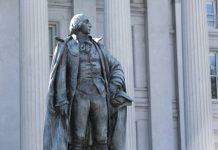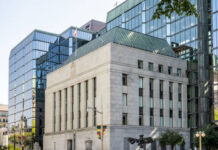EUR/USD is unchanged in the Friday session, as the pair trades at 1.0770. On the release front, it’s a quiet end to the week. Eurozone Trade Balance slipped to EUR 15.7 billion, well short of the estimate of EUR 22.3 billion. In the US, today’s highlight is US Preliminary UoM Consumer Sentiment, which is expected to improve to 97.1 points.
There were no raised eyebrows when the Federal Reserve raised rates by a quarter-point on Wednesday, as the markets had priced a rate hike at over 90%. The rate hike, the second in just three months, raised the raised the benchmark lending rate to a 0.75%-1% range. What was not expected, however, was the sharp drop of the dollar against its major rivals. This was largely due to disappointment with the Fed, which sent a more dovish message than the markets wanted to hear. Leading up the rate announcement, there had been speculation that a red-hot US economy would propel the Fed to accelerate its pace of monetary tightening, with possibly four rate hikes this year. Instead, Fed Chair Janet Yellen reiterated that further rate hikes would be ‘gradual’ and left its ‘dot plot’ unchanged, with a projection for three rate hikes in 2017. As well, the US dollar may have lost ground due to traders and investors acting on ‘buy on rumor, sell on fact’. This large-scale selling of US dollars after the Fed hike has sent the US dollar broadly lower, and gold has taken advantage with impressive gains of 2.5 percent since the Fed announcement.
European governments can breathe a sigh of relief following the results of the election in the Netherlands. The centre-right coalition of Prime Minister Mark Rutte won the most votes, handily defeating the anti-EU Freedom Party, headed by Geert Wilders. The election was closely watched across Europe, as it was viewed as a bellwether of populist sentiment on the continent. Leaders in France and Germany, who are also facing tight races due to rising anti-EU sentiment, are hopeful that they can copy Rutte’s recipe for electoral success. The election results have helped push the euro to its highest level February 5.











